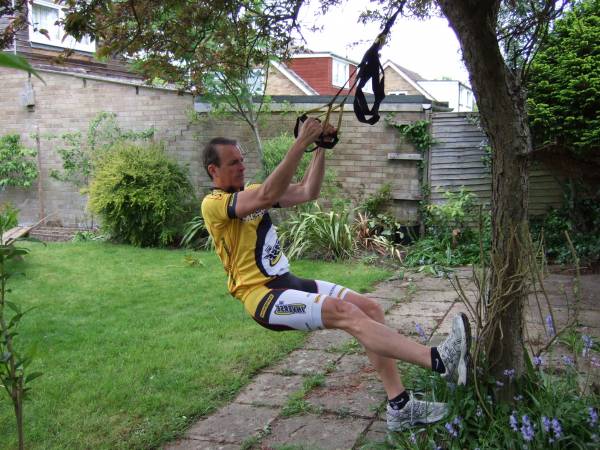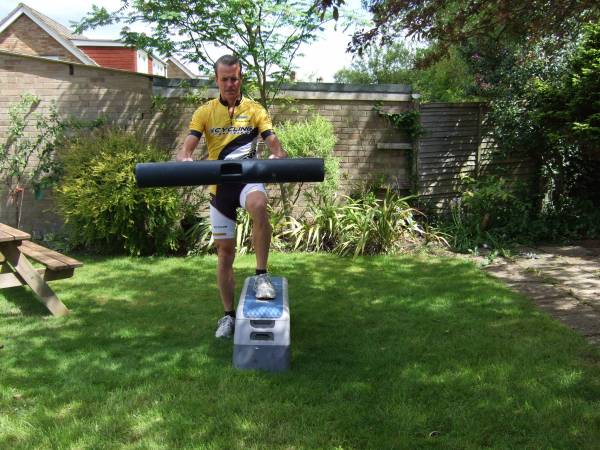I’ve recently discovered some new research on combining endurance and explosive strength training for cyclists. Researchers at Lillehammer University College in Norway analyzed the effect of combining endurance training with heavy or explosive strength training on endurance performance.
I’ve recently discovered some new research on combining endurance and explosive strength training for cyclists. Researchers at Lillehammer University College in Norway analyzed the effect of combining endurance training with heavy or explosive strength training on endurance performance.
The research concluded that this combination led to an improvement in performance and improved endurance, as measured by power output (VO2 max) and time to exhaustion (for both runners and cyclists).
Why Explosive Exercise Matters
Heavy or explosive exercises help the body to recruit a maximum number of muscle fibers in order to perform the required motion, which is a neurological function, in addition to any strength development that may occur.
Since performance is related to how much power you can deliver, the development of force and speed (which together define power) seems logical.
If you are only recruiting fifty percent of your available muscle fibers, then assisting the body to use more of them will deliver greater power. Similarly, learning to deliver that force more quickly will enable you deliver more power, too.
How to Train Explosively
Explosive and heavy exercises can be delivered in a number of ways. One method is to train on the bike using a combination of sprints or hill climbs, either (safely) on the road or a turbo trainer.
If you find yourself unable to use your bike, there are some alternatives using gym equipment or bodyweight exercises. One approach could be to use a resistance program in the gym that engages and recruits muscles in a similar movement to cycling.
Another way could be using bodyweight exercises with a rapid motion using momentum to recruit many muscle fibers.
How to Train Explosively With Bodyweight Exercise
I am going to choose an example of a bodyweight exercise to illustrate some routines using a suspension trainer.
One of the benefits of using a suspension trainer is that it is portable. So if you find yourself traveling frequently, this can often be easily packed in your bags. Your training schedule can then continue while you are away, and you can get back to regular endurance training when you return home.
Single Leg Squat to Jump
This exercise uses a suspension trainer. Facing towards the point of suspension, hold both handles in a position that replicates holding your handlebar. Squat on one leg until the knee is approximately ninety degrees, then explosively extend the knee into a jump, while holding onto the handles.
This exercise can be progressed to a single arm grip or by number and speed of repetitions.

Frontal Plane Step Over
The second bodyweight exercise uses a step. With one foot resting on the step, extend the knee into a jump and land on the other foot. Jump again, changing each leg with each jump.
This exercise can be progressed by holding a light weight such as the small ViPR. Hold it like a pair of handlebars as shown in the picture. A small weighted bar could also be used. An alternative would be to stay with the same leg and use a heavier weight such as a dumbbell or sand bag.

Stair Climb
If you don’t have a convenient exercise step like the previous exercise, a flight of stairs in a local park or hotel can also make for an effective cycling-relevant workout.
Since this will be a bodyweight session, the workout simply comprises running up the stairs. Do make sure it is safe to do so first, and that you are not going to collide with anyone coming the other way.
I am fortunate that in my local park there is a small hill with some steps that take approximately thirty seconds to reach the top. I do four sets of this during my biweekly run.
Depending upon your timetable, you could mix some of these exercises before or after an endurance ride or set aside two days per week specifically for this type of training.
If you are using heavier weights, then I would start with four sets of four reps. For lighter weights, increase the number of reps up to twelve to fifteen, making sure that each exercise is performed in a controlled manner.
References:
1. Rønnestad, B.R. and Mujika, I. “Optimizing strength training for running and cycling endurance performance: A review.“Scandinavia J Med Sci Sports. 2013 Aug 5.
Photo 1 courtesy of Shutterstock.






